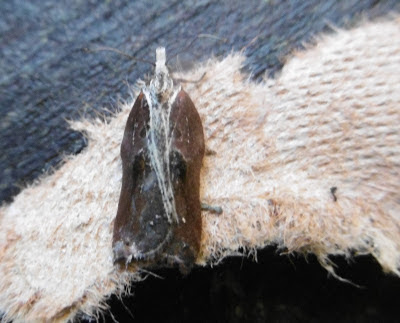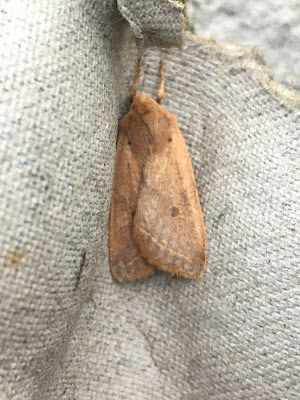Do you remember Tufty the red squirrel which fronted the various campaigns of the Royal Society for the Prevention of Accidents? Here is his moth equivalent, a scrap of a micro called Acleris cristana which looks pretty ordinary until you see it sideways on.

Its origin and purpose (if any) does not appear to be known to entomologists; it would be excellent if someone took the subject in hand, including the effects (also if any) on the tiny creature's aerodynamics. Do the tufts hinge down like aircraft wing flaps or do they remain sticking up in flight? There's a PhD subject for someone!
Another feature of this moth is the curious appearance of some of the 137 different forms which have been discovered so far; They look as if a tiny lizard is wriggling down their back. Mine was not one of those but I was visited by one in December 2015. Here it is, along with some similar examples from Richard Lewington's paintings in the Micro-moth Bible.








No comments:
Post a Comment